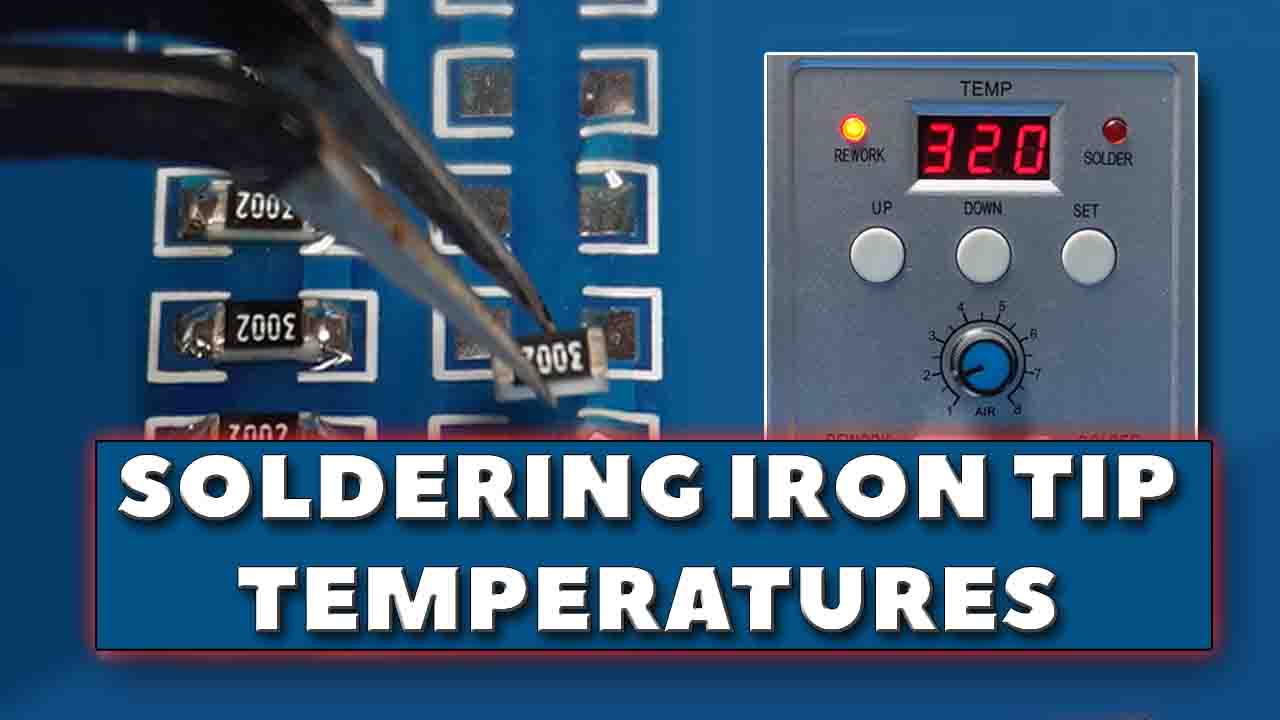Soldering Iron Tip Temperature | Bottom Preheating Table
Author Dmitrii KhramtsovPosted 2 August 2025
Updated 2 August 2025

Common Problems When Soldering PCBs
How often do you fail to solder or desolder electronic components?
I want to share the basics with you. I will explain what proper soldering temperature need to be set and explore the tools and methods that help solder quickly and with high quality.
Let’s start with the soldering iron.
Why Temperature-Controlled Soldering Irons Matter
Before you buy a soldering iron, find one that allows you to adjust the temperature. I don’t recommend soldering irons without temperature control, because you won’t even roughly know what temperature is being transferred from the soldering iron tip to the PCB joint. This is very critical.
Modern Electronic Components Are Sensitive to Heat
When soldering electronics, it’s essential to know the exact temperature at the iron tip. That’s because modern electronic components are very sensitive to high temperatures and can be damaged due to overheating.
What Happens When the Tip Gets Too Hot
Also, when the temperature exceeds 350°C, soldering flux begin to burn more actively on the iron tip, which leads to carbon buildup, requiring more frequent cleaning. There will be more smell from the burning, the molten solder will flow worse and the soldering iron tip will wear out faster due to overheating.
Recommended Tip Temperatures for Lead and Lead-Free
For me, the ideal soldering iron tip temperature for soldering lead-based PCBs is 320 °C. For lead-free, it’s 350°C — 30 degrees higher.
Why These Temperatures Work
First of all, 20 years of experience and IPC-610 specialist. If the temperature is set below 310°C, it becomes difficult to heat the joint to the melting point of leaded solder. This increases the time the iron tip stays on the joint, which can cause PCB delamination and component overheating. One of the most important factors in soldering is contact time — ideally no more than 2 seconds.
Why the Solder Doesn't Melt Sometimes
When I try to desolder a component, the heat transferring through the soldering iron tip to three bodies — to the component, to the PCB, and to the solder. For melting leaded solder, I must raise the joint temperature on PCB to at least 183°C, and for lead-free solder — at least 220°C. But because heat from the tip quickly spreads through the PCB, I can’t raise the temperature at the joint — it stays too low, the solder doesn’t melt, and the soldering iron tip sticks to the PCB joint. This indicates insufficient temperature at the soldering iron tip.
Why Iron Tip Overheating Is a Big Mistake
One key issue in this case is low thermal capacity of the tip. Thin tips have a small cross-section. They don’t store enough heat, and thermal transfer is limited. As a result, many people just increase the iron tip temperature to 400°C if it’s adjustable and that’s a big mistake. That’s an extreme temperature for the PCB laminate FR4 and dangerously high for almost any electronic components. You will just burn them. And the iron tip itself will wear out much faster. You definitely shouldn’t do that.
Tip Lifespan in Electronics Manufacturing
For reference: in electronics manufacturing, the average lifespan of a soldering iron tip is 10,000 solder joints.
How to Solve Temperature-Related Problems?
Option 1: Thicker Tip
It holds more heat, which is enough to bring the joint to melting point of solder. But it’s extremely inconvenient to use a thick tip for small SMD components. It’s like trying to solder a phone connector with a hot axe.
Option 2: Professional Soldering Station
Professional soldering station that can quickly restore heat even to a thin iron tip, in real time. Any modern soldering station — JBC, Weller, Metcal, and others — handles temperature control and recovery extremely well. For most daily soldering tasks, a professional soldering station is sufficient without any extra tools. The heat compensation speed of a professional station is very high — No matter what heater installed in the station - inductive or resistive. You can solder a connector or PCB easily, holding the iron tip for just 1–2 seconds on each pin, and the temperature will stay stable throughout. Time is critical because long contact times cause the solder alloy to overheat, and the flux burns off, and solder flow degrades. But sometimes, I need to solder or desolder large components, and there are big copper planes inside the PCB. In this case, I still can’t raise the temperature at the joint.
Option 3: Bottom Preheating Table
This is one of the most essential tools for soldering and repairing PCBs. The goal of the preheater is to saturate the PCB with heat from below, so that the heat applied from above — by soldering iron or hot air — doesn’t spread across the board but instead helps raise the temperature directly at the joint. This allows to change components quickly and effectively, without overheating the PCB, and without damaging the laminate or electronic components.
- The bottom heater is usually set to 180-200°C.
- 0.5-inch gap between the PCB and the heater.
- Place the PCB on the preheating table and wait around 2 minutes to absorb the heat.
- As a result, the PCB temperature will be around 100–110°C.
For the PCB, 100°C is not critical — it won’t harm it or any plastic components. At this point, you can easily solder using any iron tip at 320°C or even lower.
Thank you for reading!
Watch video Soldering Iron Tip Temperatures and Bottom Preheating Table for PCB!



